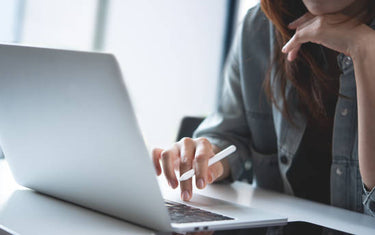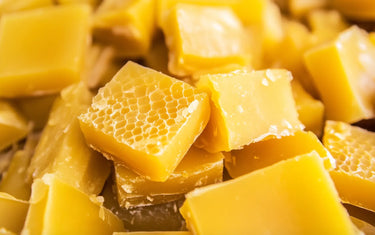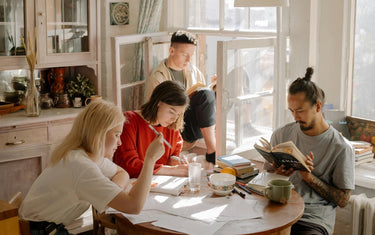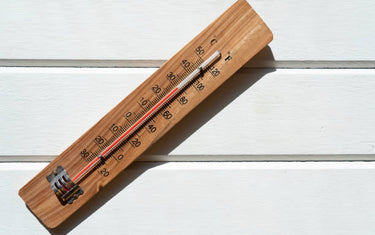4 min read / 1 July 2023 / Laura Garvin Gomez
What Temperature Does Candle Wax Melt At?
Unveiling the melting point of candle wax and its scientific insights.
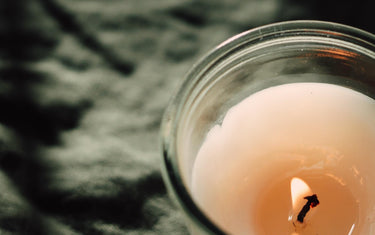
When it comes to making candles or wax melts that perform well and are safe to use, you need to know the melting point of the candle wax.
However, because there are quite a few different types of wax to choose from, it isn’t always easy to know the melting point of each one, unless you have a lot of experience.
Here we answer the question, “What is the melting point of wax?” as well as the pouring and fragrance points for the most popular types of wax, so you can decide which one is best suited to your candles and melts.
At what temperature does wax melt?Most candles have a melting between 37-88°C (100-190F), although the differences between each type of wax can be quite large. Before you start a recipe, it is important to know the candle wax melting point so you can add scents and colours at the right time and know when to pour. When you can maintain the right temperature during the melting and pouring stages of the process, you should be able to enjoy a much better candle at the end. If the melting point of the wax is exceeded, it could cause a chemical reaction that changes the candle form, which will be irreversible. It could also pose a danger to the person making the candle, depending on the conditions at that moment. |
What is the melting point of wax?
There is no single melting point of candle wax, as it depends on the type of wax you are using to make the candle.
Before you start candle making or wax melt making, you can use the information below as a melting point guideline, so you have a better idea of its performance properties. You can also find any fragrance oils you need at a discount when you sign up for a wholesale account.

Soy wax
Soy wax is one of the most popular types of waxes used to make candles and is a 100% natural option.
It is made from soybeans which makes it a green, sustainable option and it has a melting point of 45-54°C (113-127°F), which is lower than most, allowing it to last longer.
- Pouring point: 82-85°C (180-185°F)
- Fragrance added: 48-60°C (120-140°F)
- Cure time: 3-4 days (max 2 weeks)
Beeswax
Another great natural option for candle making is beeswax, which is made completely from bee’s wax.
It has a very high melting point of 62-65°C (44-149°F) and is regarded as being a hard wax.
Because there are no chemical compounds in beeswax it is biodegradable and very eco-friendly, and it also does not produce a lot of smoke whilst being burnt.
- Melting point: 68-71°C (155-160°F)
- Fragrance added: 71-74°C (160-165°F)
- Cure time: 2 days
Coconut wax
To make it suitable for candle making, coconut wax is usually blended with soy wax.
Like soy and beeswax this is also a natural option, with no chemicals added to the material.
This helps the wax to retain its form and retain the fragrance for a better scent throw. The melting point for coconut wax is 51-53°C (124F-127°F).
- Pouring point: 43-54°C (110-130°F)
- Fragrance added: 54°C (130°F)
- Cure time: 1-2 days
Gel wax
Gel wax can be used to make both candles and wax melts and has a very high melting point of around 82°C (180°F).
This type of wax tends to offer quite a long burn time and can outlast traditional wax candles and melts.
However, it does contain a crude oil by-product of refined crude oil, which doesn’t make them an eco-friendly option.
- Pouring point: 85-93°C (110-130°F)
- Fragrance added: 76°C (130°F) for flash point fragrances
- Cure time: 1-2 days
Paraffin wax
You’ll find that paraffin wax is the most widely used wax for commercial products as it is also the cheapest.
It has a melting point of 46-61°C (115-142°F) and does a good job of holding colour and scents to produce a strong scent throw.
The major downside of paraffin candles is that they are not natural and emit carcinogens and other pollutants.
- Pouring point: 43-54°C (110-130°F)
- Fragrance added: 54°C (130°F)
- Cure time: 1-2 days

Is candle wax bad for your health?
Whilst some waxes, such as paraffin and gel wax do release paraffin and other toxic chemicals, it is also important to highlight that the European Candle Manufacturers Association (ECMA) has previously stated that no reputable scientific study has shown that candle wax of any kind, including paraffin, is harmful to humans.
The ECMA conducted a further study in 2007 that checked all major types of candle wax for 300 toxic chemicals and found that the level of chemicals released would not be harmful to human health. [1]

Now that you have the melting, pour and fragrance points for all the main types of wax, all you need to do now is to get your ingredients in order and get creative.
If you want a purely natural candle, then soy, beeswax or coconut wax is the way to go, and you won’t have any concerns about toxic emissions.
All wax can be recycled for use again, so remember to hang onto it once you have finished the candle or melt, because remelting it into a new candle couldn’t be easier!
| Type of Wax | Pouring Point | Fragrance Added | Cure Time |
|---|---|---|---|
| Soy Wax | 82-85°C (180-185°F) | 48-60°C (120-140°F) | 3-4 days (max 2 weeks) |
| Beeswax | 68-71°C (155-160°F) | 71-74°C (160-165°F) | 2 days |
| Coconut Wax | 43-54°C (110-130°F) | 54°C (130°F) | 1-2 days |
| Gel Wax | 85-93°C (110-130°F) | 76°C (130°F) for flash point fragrances | 1-2 days |
| Paraffin Wax | 43-54°C (110-130°F) | 54°C (130°F) | 1-2 days |
Whether you’re new to candle-making or a seasoned pro, you can find all the essential and fragrance oils you need from our wholesale. The best part? You’ll have access to exclusive deals and discounts. Now, it’s time for you to get candle making!
References
[1] (2007) Candles Europe https://candleseurope.com/wp-content/uploads/2023/08/2007_Summary-of-07-Okometric-study-on-candle-wax-emissions.pdf


